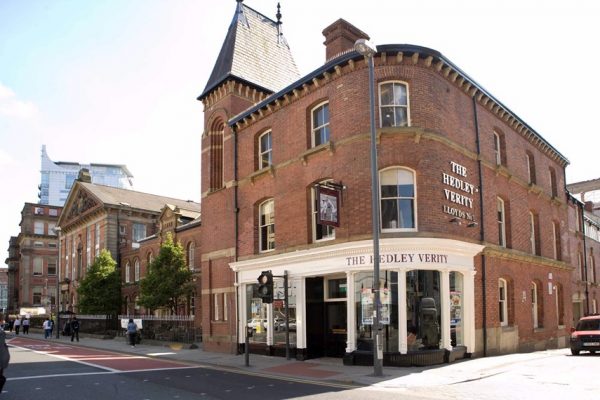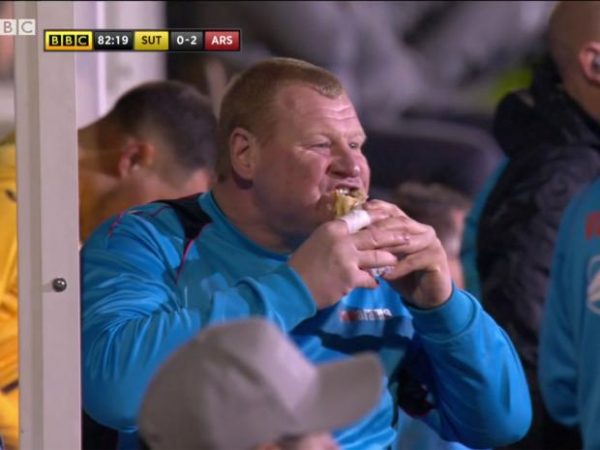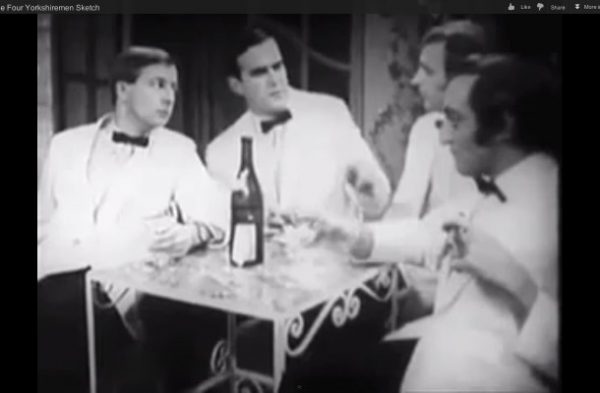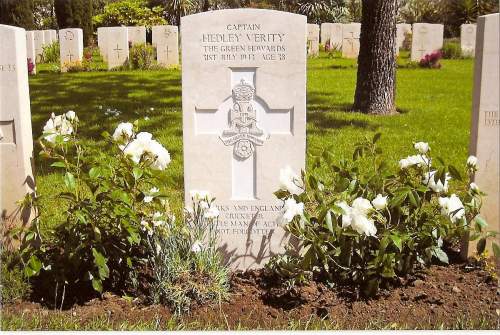
A gradual but inevitable descent into cricket-based loathing and bile.
The 51allout Bargain Basement Book Bonanza: Chris Waters’ ’10 for 10′
Let us state for the record that this book is far from our comfort zone. We can handle 500-odd words about the Big Bash or England batting collapses but cricketers from the 1930s are a different beast. Nevertheless, we aren’t complete ignoramuses and we are aware of who Hedley Verity is – not just a JD Wetherspoons in Leeds – and some of his feats. Hell, I actually wrote a short story about his death once. Really. Therefore, we really ought to have already read this book, but it’s difficult to find the time, what with all those Wetherspoons to visit.

The Hedley Verity. Just around the corner from Ye Olde Ryan Sidearse.
The author uses one single spell – “cricket’s greatest bowling feat” according to the subtitle – as the spine of the story, but frames this with chronological and autobiographical chapters of Verity’s life. He also uses detailed research to add context to the summer of 1932. The result is an interesting account of a life as well as fascinating depiction of cricket at this time.
We particularly enjoyed the revelation that Nottinghamshire’s Bill Voce bet Harold Larwood “a pint of beer and a packet of fags” that he couldn’t dislodge Joginder Singh’s turban…”which was duly sent in the direction of the slips”, something that would be frowned upon these days for a myriad of reasons.

Scum. Sub-human scum.
Elsewhere in the same season, Voce bowled a delivery so fast that it knocked the Somerset batsman Cecil Case’s bat out of his hand and on to the stumps; Case was so confused he trudged back to the pavilion clutching a stump rather than his bat; don’t be surprised to see Virat Kohli do this the next time he is bamboozled by a Steve O’Keefe straight ‘un. The book also demonstrates just how popular cricket was in the 1930s, especially as a spectator sport. With counties often playing six days a week, in a period of economic uncertainty, it is amazing that thousands of people per day would attend county championship fixtures. Incredibly, at the end of the 1932 season, 5,000 people congregated at Leeds station just to see four Yorkshire cricketers head off to London ahead of their Ashes tour down under.

From l-r, Verity, Bill Bowes, Maurice Leyland and Herbert Sutcliffe.
The other mind-blowing information in this book relates to Verity’s career itself. His 10 wickets for 10 runs against Nottinghamshire may be the hook from which the stories hang, but it’s worth setting out some of the stats that are sprinkled throughout, including that Verity dismissed Don Bradman more times than anyone else did (eight times in 17 Tests). Alongside that, in a First Class career lasting from 1930 to 1939, he took:
- ten wickets in an innings twice;
- nine wickets in an innings seven times;
- eight wickets in an innings 13 times;
- 17 wickets in a day against Essex;
- 9/12 against Kent (he caught the other batsman who was out) and 15/38 in the match; and
- 7/9 against Sussex in the final First Class match before the war.
Of course, that match against Sussex in 1939 was Verity’s last First Class match ever, for he became arguably cricket’s most notable casualty of a war. The final chapters retell this in a suitably sombre manner. The author speculates what Verity may have done had he survived the war, including returning to cricket for a few more years. Verity himself once said, “after the war, I would like to go into politics to make this world a better place to live in”, presumably followed by “for you and for me and the entire human race.”
Chris Waters was clearly close to Verity’s late son Douglas, and the book is understandably reverential. It never fails to promote its subject as a paragon, both on and off the field. Rightly so, as on this evidence and the eulogia given by his peers, it’s not an exaggeration to describe Verity as some kind of hero.


3 Comments
Post a Comment
1
Nichael Bluth
14 Mar 2017 11:54
If anyone needs me I’ll be in the (Phil) Newport Hotel in Fremantle.
2
Matt H
13 Mar 2017 19:35
Good idea. Is there a Mark Ealham Arms in Kent somewhere?
3
Alex G
10 Mar 2017 17:29
Idea for an article: The 51allout team visits pubs named after famous cricketers. And drinks gin in them till they get asked to leave.